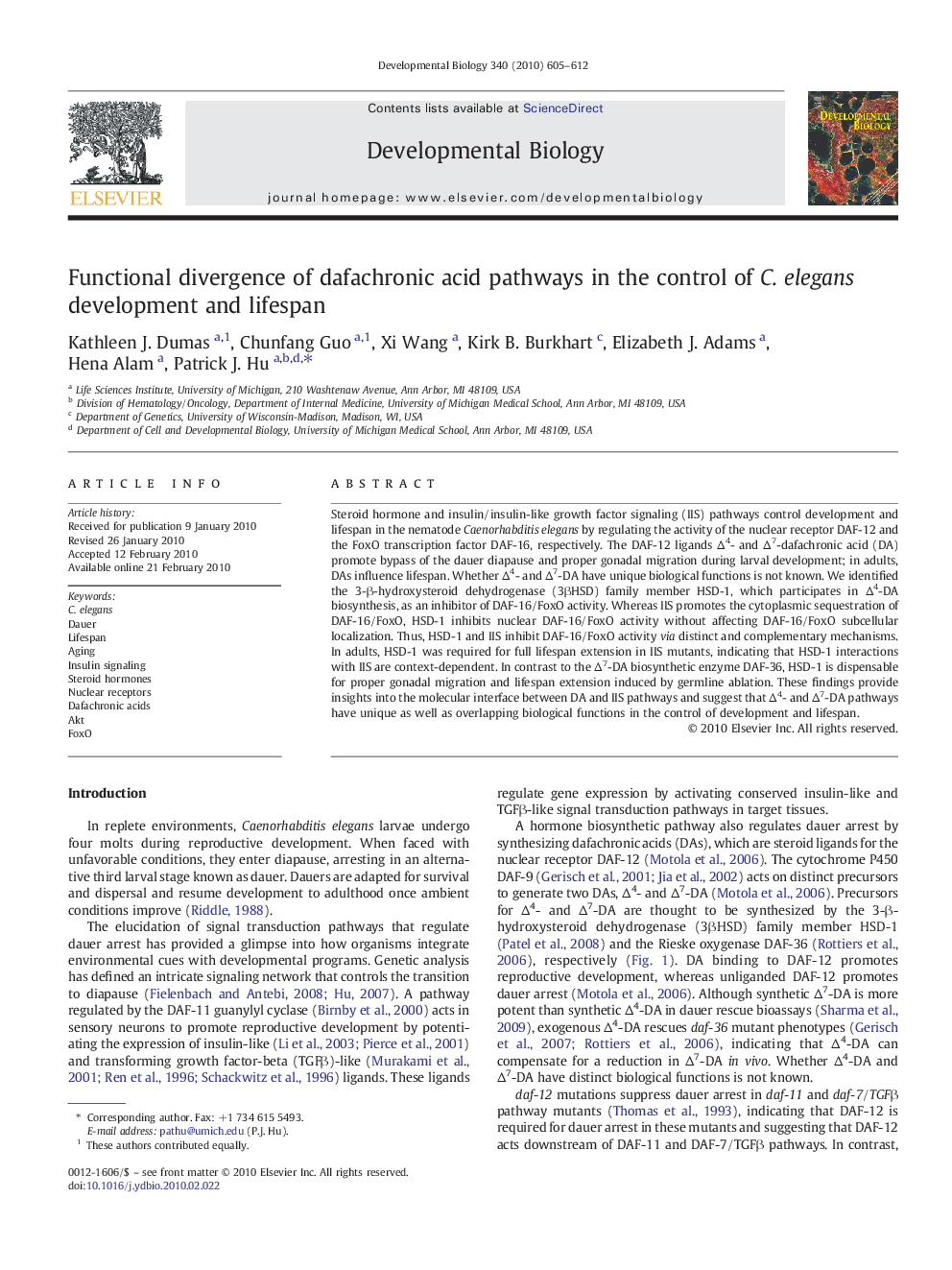| Article ID | Journal | Published Year | Pages | File Type |
|---|---|---|---|---|
| 8468356 | Developmental Biology | 2010 | 8 Pages |
Abstract
Steroid hormone and insulin/insulin-like growth factor signaling (IIS) pathways control development and lifespan in the nematode Caenorhabditis elegans by regulating the activity of the nuclear receptor DAF-12 and the FoxO transcription factor DAF-16, respectively. The DAF-12 ligands Î4- and Î7-dafachronic acid (DA) promote bypass of the dauer diapause and proper gonadal migration during larval development; in adults, DAs influence lifespan. Whether Î4- and Î7-DA have unique biological functions is not known. We identified the 3-β-hydroxysteroid dehydrogenase (3βHSD) family member HSD-1, which participates in Î4-DA biosynthesis, as an inhibitor of DAF-16/FoxO activity. Whereas IIS promotes the cytoplasmic sequestration of DAF-16/FoxO, HSD-1 inhibits nuclear DAF-16/FoxO activity without affecting DAF-16/FoxO subcellular localization. Thus, HSD-1 and IIS inhibit DAF-16/FoxO activity via distinct and complementary mechanisms. In adults, HSD-1 was required for full lifespan extension in IIS mutants, indicating that HSD-1 interactions with IIS are context-dependent. In contrast to the Î7-DA biosynthetic enzyme DAF-36, HSD-1 is dispensable for proper gonadal migration and lifespan extension induced by germline ablation. These findings provide insights into the molecular interface between DA and IIS pathways and suggest that Î4- and Î7-DA pathways have unique as well as overlapping biological functions in the control of development and lifespan.
Related Topics
Life Sciences
Biochemistry, Genetics and Molecular Biology
Cell Biology
Authors
Kathleen J. Dumas, Chunfang Guo, Xi Wang, Kirk B. Burkhart, Elizabeth J. Adams, Hena Alam, Patrick J. Hu,
